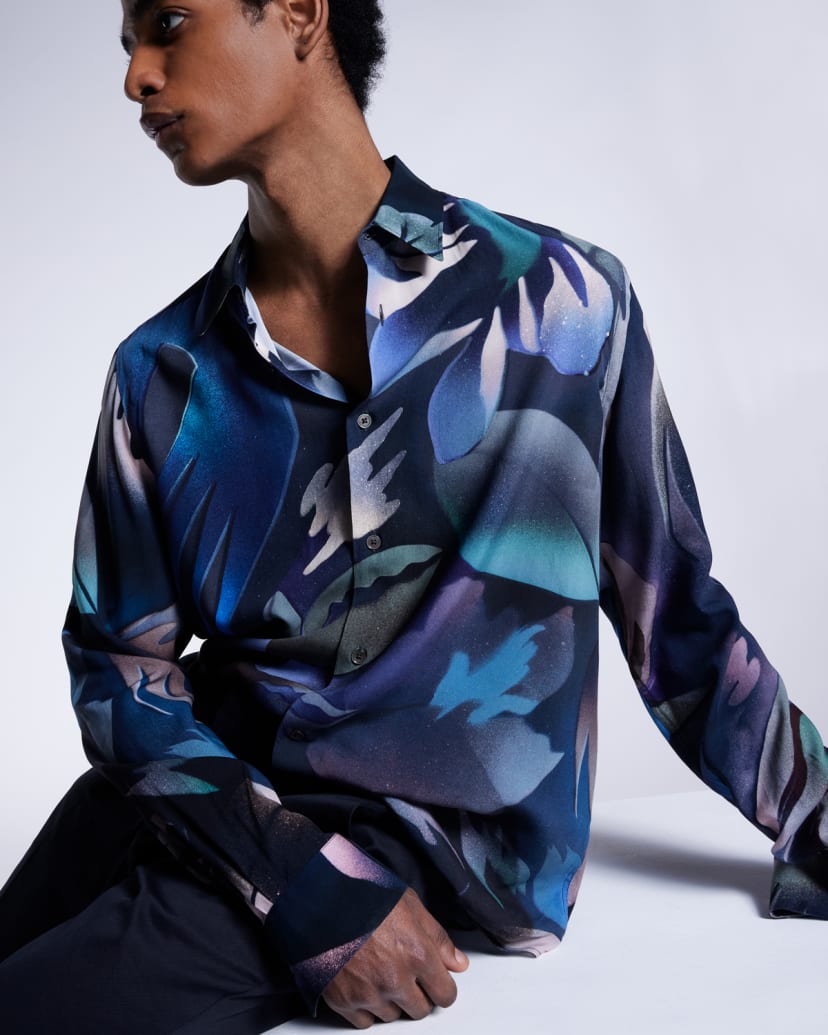Everything You Need To Know About Suit Linings

Why are suit linings important and what is the best lining for men’s designer suits? Find out in our handy guide to picking out the right suit lining for you.
What Is A Suit Lining?
Given a suit lining isn’t always visible, it’s easy to dismiss them as insignificant in the grand scheme of buying a men’s suit or having a bespoke suit or custom suit made for you. But your choice of suit lining is much more important than you may first assume. The right suit lining will affect how your tailoring fits, the weight, structure, its crease resistance, and warmth – and even the way your suit hangs, including how it conforms to the contours of your torso. In other words, choosing the right suit lining is one of those details you don’t want to overlook.
Different Types Of Suit Linings
In the world of suits and suit tailoring, tailored suits are usually equipped with a lining (even unlined suits will usually have sleeve linings). Different types of men’s suit linings include the most common types – a full lining or a half lining – as well as lesser-known types, such as a butterfly lining. Your choice will depend on a number of factors, including the climate you live in, what season you’ll be wearing your suit in, how you want your suits to fit and even comfort.
What Is A Fully Lined Suit?
Suit tailoring has come a long way but the most classic option is still the most, well, classic. A fully lined tailored suit is defined as a men’s suit jacket that has the entire interior – from the sleeves and shoulders to the full torso – lined, most commonly, in a smooth, breathable fabric. The benefits of fully lined men’s suits are numerous – it’ll have superior crease resistance and will ensure it lays smoothly over your torso while still maintaining a high degree of structure. But keep in mind it might be a touch too warm or bulky for the warmest months. In which case, you might want to consider the next option on our list.
What Is A Half Lined Suit?
A half lined suit is a better option for warmer weather. While the name suggests that only half the suit is lined when opting for a half lined suit, in most cases, slightly more of the jacket will contain lining – namely half the back of the jacket and through the front panels (as well as the sleeves). And though you’ll sacrifice a degree of structure with a half lined suit, and your tailoring will wrinkle a little easier, this is a great choice for tropical weight tailored suits or those made from lightweight summer-specific fabrics such as linen or cotton.
What Is A Butterfly Suit Lining?
An even more lightweight option, a butterfly lining (occasionally referred to as a quarter lining or buggy lining) is a bit more of a rare sighting in comparison to half lined suits. It consists of two curved panels of fabric that crossover creating ‘wings’ of lining at the yoke, through the shoulders and covering the upper back providing a smooth finish without any bulk or too much structure. The sides and front of the jacket remain lining free, though, as with a half lined suit, it will still in the vast majority of cases be lined through the shoulders.
What Is An Unlined Suit?
As previously mentioned, few men’s suits – save items like knitted blazers – are truly completely unlined. A traditional unlined suit jacket, for example, will still include lining through the sleeves to ensure a smooth finish and comfort. You’ll find unlined suits tend to err on the side of more casual styles and are often made from lightweight canvas or twill materials. And while doing away with a suit lining might seem like an inexpensive or quicker route, an unlined suit necessitates much more attention to detail inside – with each and every visible seam requiring a neat finish.
What Fabrics Are Used For Suit Linings?
Just as there are a variety of suit lining styles to pick from, there are also a variety of fabrics for suit linings available. These fall into two main categories: natural or synthetic materials. By far the most popular in the former category is silk, which you can often find on bespoke suiting, with a price tag to match. While silk has a luxury feel, it is less hard-wearing and liable to snagging and tears. Hence why many brands – including Paul Smith – tend to favour synthetic alternatives like cupro (sometimes called Bemberg or Bemberg silk), which was specially developed to mimic the properties of silk with the added benefit of extra breathability and durability.
Paul Smith Suit Linings
Since it’s not the most visible element on a suit when worn, jacket linings are also a great opportunity to experiment with colour, print or pattern in a more subtle way. For Paul Smith, this attention to detail epitomises the designer’s ‘classic with a twist’ philosophy that he’s championed since the 1970s. You’ll spot that many of Paul Smith’s suits have printed or tonal jacket linings for that very reason. When you order a custom suit jacket, bespoke tailoring or bespoke suits from Paul Smith, you can also completely customise them to your exact specifications.
Discover More
Do you want to keep in touch?

